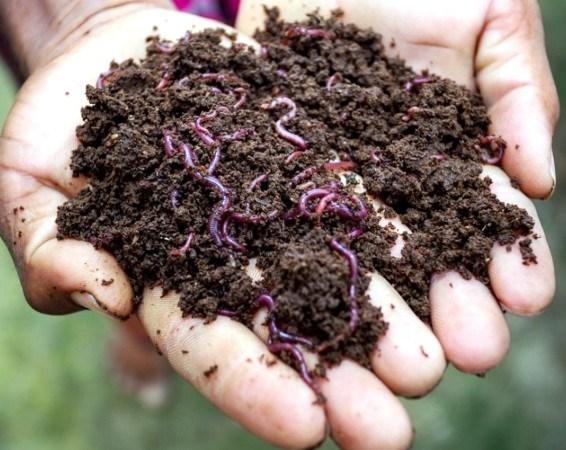Last week the column was all about that dark, crumbly, sweet smelling material that is the product of aerobically decomposed organic material called compost. We know that it greatly improves the structure of the soil as well as its capacity to hold and provide nutrients to plants. We learned that in order to compost four main components are needed: organic matter; moisture; oxygen and bacteria. In addition to bacteria, larger organisms including insects and earthworms are also active composters and have the ability to break down larger materials in the compost pile.
The amount of time needed to produce compost depends on several factors, including the size of the compost pile, the types of materials, the surface area of the materials and the number of times the pile is turned. A good size for efficient composting is a pile/bin that is between three to five cubic feet. This allows good heating of the centre of the pile. Breaking down the materials into smaller parts by chipping, shredding or mulching will help to more quickly allow the compost to be made.
Turning the pile every two to four weeks will also help to speed up this process as it takes a couple of weeks for the pile to heat which will promote maximum bacterial activity. Do ensure when turning the compost pile, make sure that materials in the center are brought to the outsides, and that materials from the outside edges are brought to the center. With frequent turning the compost can be ready in about three months in our warmer season.
When using the compost, it is best to incorporate compost into your garden as you prepare the soil in the spring. Cover the area with three to four inches of soil and till it into at least the upper six inches of soil. Add compost to soil in vegetable gardens, annual flower beds and around new perennials as they are planted. It may also be used as a mulch around flower beds, vegetable gardens or around trees or shrubs in landscape beds. Apply a good three-inch layer but be careful not to apply mulch close to the main stem or trunk of the plant.
As the summer wanes into fall you can alter your composting to vermicomposting or the process of making compost with the help of a specific type of worm. The most common type of worm for this process are red wigglers (Eiseniafoetida). They are voracious eaters who can easily eat their way through your kitchen waste and in the process convert that waste into a useful product.
Any container will do but I find Rubbermaid totes are ideal. It is necessary for the bin to have oxygen so you can either poke holes in the lid or cut an opening in the top and cover it with a fine screen. To set up the container when you are starting you will need to provide a combination of “bedding” along with a small amount of garden soil. The best bedding is light and fluffy to allow a good exchange of air. Â鶹´«Ã½ is a good bedding material and is readily available. Simply tear the newspaper into narrow strips and moisten it slightly by soaking it in water for several minutes. Ensure you squeeze out the excess water prior to adding the newspaper to the soil as the environment must be moist but not soggy. Your worms will also need to be fed a balanced diet of good kitchen waste.
Good foods to feed your worms include most kitchen scraps including: vegetable and fruit peelings; tea bags; coffee filters; egg shells (crushed); dry bread. It is important to avoid: meat; fish; cheese; butter; animal products; and large amounts of citrus peels. Worms need to be fed regularly in order to continue the process of composting.
Your new pets (the red wrigglers) will live quietly in their dark box. You will not have to do much to keep them happy and as long as they have a good environment they will eat their way into producing a good amount of compost for you. Keep the composting factory in a spot where the temperature is between 17 and 27 C. Compost will be ready to harvest in three to four months and you will be ready to begin the process again.
Hanbidge is the lead horticulturist with Orchid Horticulture. Find us at ; by email at [email protected]; on facebook @orchidhort and on instagram at #orchidhort.




